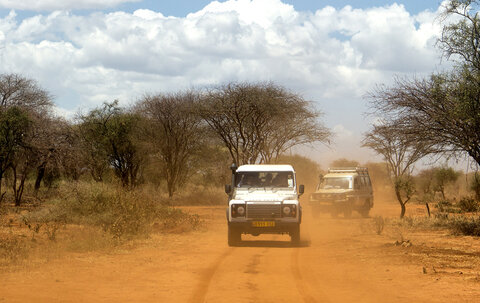Why do tsetse follow my car?

Tsetse have evolved a range of mechanisms for finding their hosts. At one extreme, they simply 'sit and wait' for a host to pass while the other is to hunt actively for the host. Most of the flies arriving at a trap or target were probably actively hunting for a host. Flies attracted to moving objects, such as a moving car, are probably tsetse that were sitting and waiting for a host to pass (Vale, 1974; Hargrove, 1991).
We can take advantage of this response by using various mobile baits to survey for tsetse. These mobile baits include:-
- a human fly-round, where one or two people walk through the bush and catch any flies that land on them
- an ox fly-round, where the people catch tsetse as they land on an ox
- a mobile electric net, where tsetse are caught by an electric net mounted on the back of a Land Rover
These methods are particularly effective for the various subspecies of G. morsitans (e.g. Vale, 1974) and young and/or recently-fed tsetse in general (Vale, 1974; Hargrove, 1991). However, they are technically and/or logistically demanding and in most cases it is probably easier and more effective to use odour-baited traps, even for G. morsitans.
References
Hargrove, J.W. (1991) Ovarian ages of tsetse flies (Diptera, Glossinidae) caught from mobile and stationary baits in the presence and absence of humans. Bulletin of Entomological Research, 81, 43-50.
Vale, G. A. (1974b). The response of tsetse flies (Diptera; Glossinidae) to mobile and stationary baits. Bulletin of Entomological Research 64, 545-587.